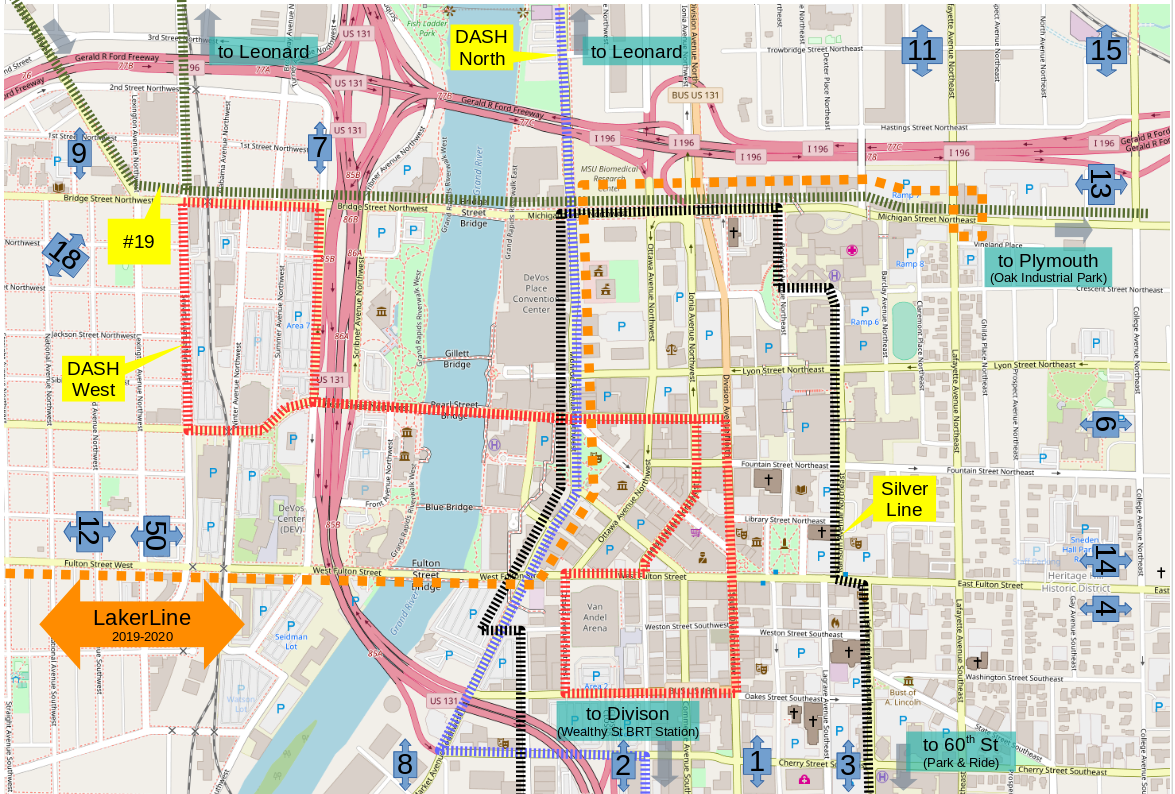Submitted by whitemice on Sun, 05/06/2018 - 15:32
Submitted by whitemice on Thu, 04/12/2018 - 07:01
DASH 3.0
Still slated for launch on August 27th.
This map illustrates what Downtown will look like when the DASH 3.0 is launched, including the enhanced RAPID#19 Michigan Crosstown as well as the LakerLine. Construction of the LakerLine begins later this year with service commencing in 2020. The combination of these route changes create a far more effective mesh of transit service for downtown.

Submitted by whitemice on Thu, 03/08/2018 - 10:57
EV Charging Stations
Electric charging stations where installed in 2011.
- 5 downtown (1 on-street)
- 1 in Oak Industrial Park
- 1 at Waste Water site.
All stations have been upgraded; new stations have two cords and have retaining clips to help keep the cords off the ground which was an issue with the previous charging stations.
Submitted by whitemice on Sun, 02/11/2018 - 09:59
This is a map of voter's support of RAPID funding in November 2017. Creation of this map was inspired by the "Transit Supporter Split" BLOG post. That post, at least proposed, that in the city of Portland [Oregon] that transit support had a conical shape: strongest downtown, tapering down as one moved out through the neighborhoods, and zeroing out into opposition when one reached the true suburbs. It raised the question of what support for the RAPID looks like in Grand Rapids.
Submitted by whitemice on Mon, 11/06/2017 - 07:37
October and November (2017) have been active months. A collection of interesting documents have been created or brought into active conversation concerning both housing and mobility.
Submitted by whitemice on Sat, 05/20/2017 - 14:45
- There will be three upcoming events with mobility integration & promotion: rock the block, GR's first Asian Festival, and Festival of the Arts.
- Of the three - Rock The Block (10K estimated participants), Asian Festival (20K), and Festival (200K) - Rock The Block is the first event not downtown. The guidelines for event sponsorship are Downtown specific if read verbatim, these guidelines need to be revisited after the expanded commission is seated
Submitted by whitemice on Thu, 06/04/2015 - 10:48
The required public information meetings for the Coast-To-Coast passenger rail project have been scheduled. These are the first of three rounds of scheduled public information meetings.
Pages